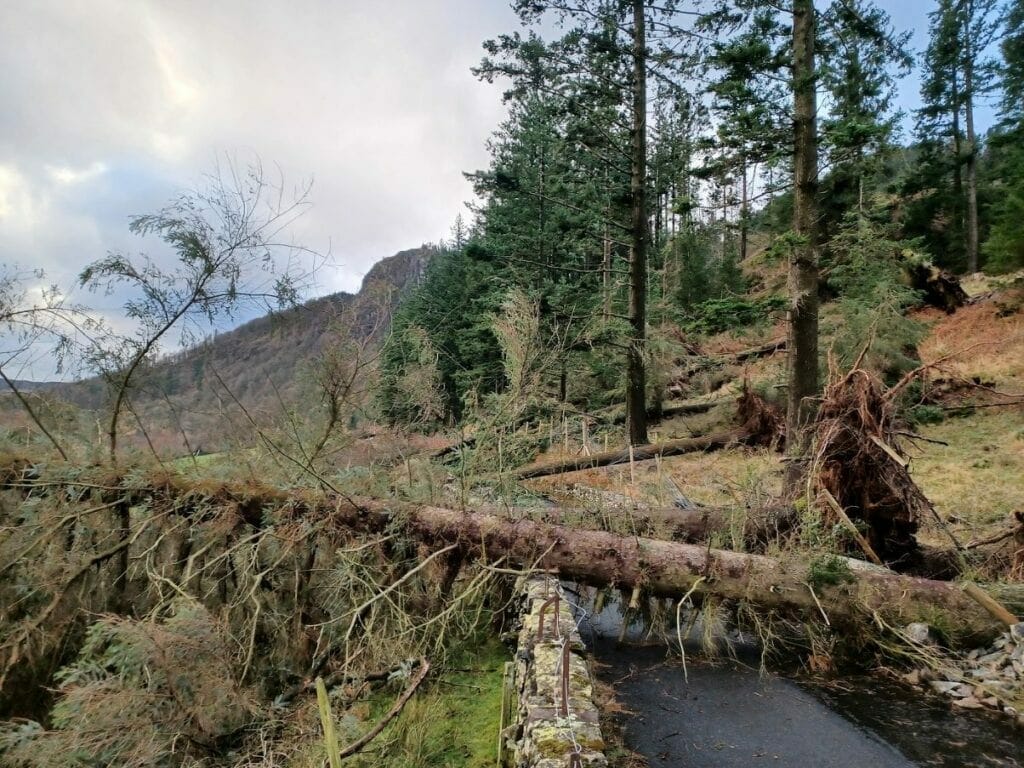
Cyclists have warned they face being “forced” to take their chances on the A591 because of the long-term closure of an unclassified but well-used Lake District route.
The U7003, which skirts the western side of Thirlmere, is now the subject of a Traffic Regulation Order (TRO) which legally allows it to remain closed for as long as 18 months.
The diversion means pedestrians and cyclists must instead use the winding A591 which skirts the eastern side of the 3.7-mile long reservoir.
The U7003 was shut in the wake of tree falls during Storm Arwen in November. The number having fallen or been damaged was put at more 1,500 last month.
Highways authority Cumbria County Council issued the emergency TRO because of the risk of danger to the public.
The county council — which is not involved in the works — has faced a freedom of information request to spell out to all road users the reasons for such a long closure with calls for a “detailed project plan” and time line.
Cyclist Mark Hatton said the closure forced them to use the A591 which brought them into proximity with large and fast vehicles travelling on the narrow and busy road.
He said: “Every cyclist I know hates riding along that stretch of the A591 between Legburthwaite, along the east side of Thirlmere passed Wythburn and up on to Dunmail Raise, because stretches of that road are narrow, curving and very tightly-bordered by dry stone walls.
Large commercial vehicles and cars often pass cyclists along that stretch without allowing enough space or they get stuck behind cyclists creating frustration.”
He said the U7003 should be reopened as soon as possible but that United Utilities appeared “unable or unwilling” with the road having a history of remaining closed for long periods “without clear justification”.
A UU spokesman said: “Many of these trees have now been cleared away but trees and boulders, that have been loosened on the steep slope located above the road, must also be removed before this road is safe to travel on.
“The size of these trees and the steepness of the slope mean specialist equipment must be used to carry out the removal. We are now at the beginning of this work and have secured the help of specialist contractors to do it. We haven’t yet determined a time-scale for the completion of this work.
“In the meantime, we are doing our best to allow access where it is safe to do so. At the southern end of the road we’ve reopened the road to Dob Gill car park.
“At the northern end we have reopened access to Raven Crag. Walkers and cyclists can also still walk and cycle over Thirlmere Dam.
“By Easter, we’re also hoping to be able to reopen the northern end of the road up to Armboth car park.
“We’re doing everything we can to reopen the road but it is a dangerous situation and needs careful handling and we’re asking for public patience while we tackle this difficult job.
“We are working closely with CCC highways division throughout the work to ensure other roadside risks such as loose boulders and dangerous crags are assessed as we carry out the tree removal.”































